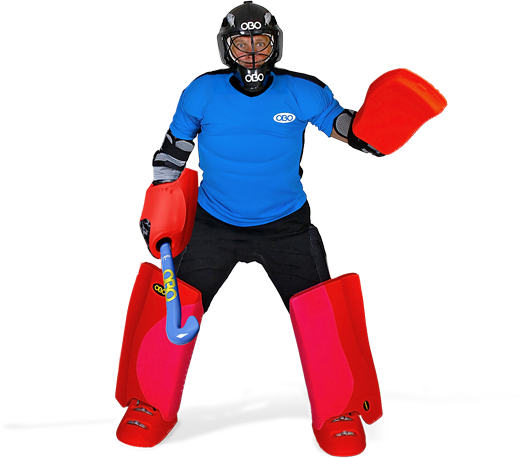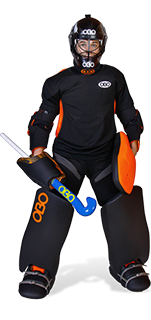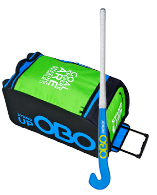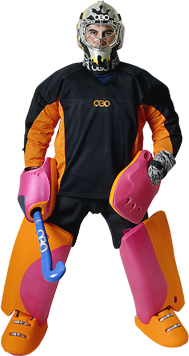KEEPERS RESOURCES

“Logging”
Logging is the idea of setting up before the low shot before it’s taken, taking the educated guess or expectation that it will go low. With the rules stating that the ball cannot be lifted above the backboard, on the first shot taken outside the D, at a short corner, the intelligent and crafty goalkeepers used this to their own advantage, lying down in preparation for the shot, which the shooter would bite at the opportunity to fire at them.
Logging, or going into a lying horizontal barrier, in comparison to diving down, involves the goalkeeper going down before the shot is taken; allowing you to block off the bottom of the net, playing the percentages to deny a goal through you.
Short corners
The log is a technique used specifically for the low, straight strike faced on penalty corners; it doesn’t work at any other time in the game, as a player could easily lift the ball over you and it would take too long to get back up from! On short corners, you can play the shooter’s options and make the choice based on percentages to cover the low shot; covering as much of the bottom of the net as possible by lying down against the hit. Although keepers have to be more creative with the move now as shooters favour the disguised and ruthless drag flick, it is still useful at covering a large amount of net by lying horizontally in front of goal, when faced with a straight strike at goal.
Lying down for the shot
On low shots, the goalkeeper is normally encouraged to ‘lie down’ against the incoming shot, taking away the low portion of the net that the shooter is looking for. By making full use of their equipment, the goalkeeper can reduce the scoring chances of the opposing players from scoring from a direct low shot at goal.
Rather than standing up for a shot, going down onto the pitch allows you to create a horizontal barrier against the incoming shot, maximising your body shape to cover the goal and take away a significant amount of shooting space, to deny the shooter on a low strike aimed on goal. Time is obviously needed to get down in readiness, so you should consider when it is best to use the move; going down with the strike so that you make the save properly.
The different stages
To make the log easier to understand and use in a game, it’s best to break it up into stages. This way, it makes it easier to copy when using the move in a game, as well as speeding up the process during play.
- As the ball is pushed out, take a few steps out from the goal depending on where you want to be for the log
- Start to lower your stick hand in your normal ready stance to help support the drop
- Drop down onto the pitch, off your hip, lying the stick down horizontally (which will also support the dropping motion) and stacking the leg pads on top of each other, ensuring you connect with the pitch to provide proper cover
- Squeeze the pads together to make sure there is no possible gap available for the ball to get through
- Push out with the legs to cover the left side, and the stick to cover low and the right post gap; using the glove to cover the space above the pads
Pointers:
- lower your stick before you go down to help you drop more quickly
- spread out to cover as much of goal as possible
- squeeze your body together so that you don’t open up any gaps in which to be scored on
- have your hip turned to face the penalty spot, so that you are horizontal to the shot
Speeding it up
As you move up the tiers of hockey, you will need to improve on your technique so that you can go down quickly when you need to (rather than going down before the shot and having the ball playing around you to be scored on). Quicker routines will mean that you have less time to get down. For the barrier save to be successful, you need to be able to get down quickly enough according to the situation. To really force yourself down into the shape quickly, you need to drive down with momentum; forcing yourself onto the floor quickly. Practising the technique repeatedly will help you improve on the technique and timing the move (try to practise it when your team are practising short corners at training).
Comments
Leave Your Comments Below















